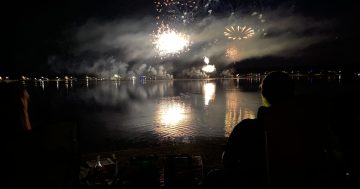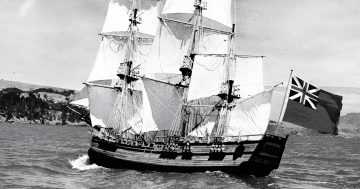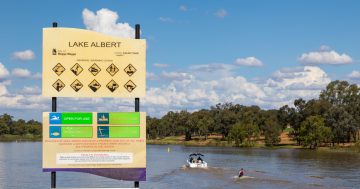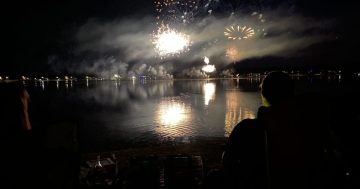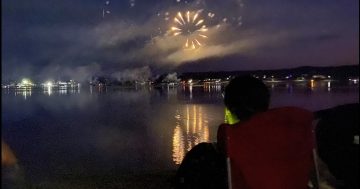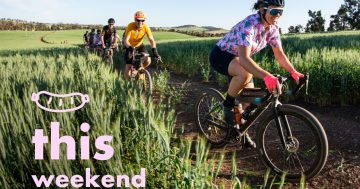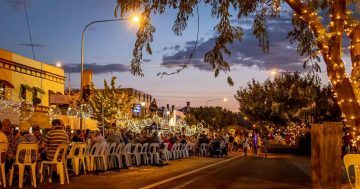
What on earth was involved in Lake Albert’s ‘Cocky’s Joy’ race? Photo: Chris Roe.
With Wagga’s Lake Albert playing host to the Flow Festival over the weekend, we thought we’d look at previous events held at the lake in its early years.
A September 1905 editorial account of the ‘Lake Albert Festival – Novelty Sports’ event in the Wagga Wagga Express caught our eye with its mysterious references to events involving unmentionable items of clothing, kerosene tins and “Cocky’s Joy”.
It seems that Lake Albert farmer Chris Annison was behind the escapades as a well-known “compendium of knowledge” on all things fun.
Annison was a noted member of the 1892 Lake Albert Farmers tug-of-war team which famously pulled against a local Irish team for a staggering five hours before finally being beaten.
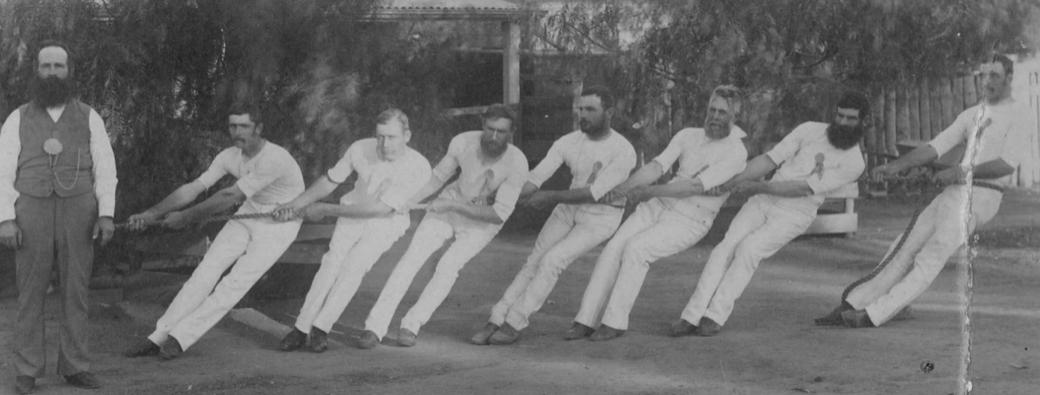
The Lake Albert Farmers tug-of-war team of 1892 with Chris Annison 3rd from the left. Photo: CSU Regional Archives.
In the bushfires of January 1905, just nine months before the festival, Mr Annison lost his “house, kitchen and dairy” to fire along with 20 sheep and “80 fowl” and was left with “not a panel of fence to tie his horse”.
Little wonder he became captain for the first Lake Albert bushfire brigade the following year.
But back at the festival, the Wagga Express‘ unnamed writer describes the September drive from Wagga to the lake as “breezy and bracing” as he headed over Willans Hill.
“After a stiff climb on the Wagga side, there came into view the snuggly-nestled lake district. If there are those who have not seen the lake full, it is worth their while going to see it. It is a natural paradise and the wonder is that the townspeople do not go out to the lake more often.”
With a grand total of £25 taken at the gate, the writer speculates that the event hosted a bigger crowd than previous events held at Plumpton.
“It would be a poor heart which did not get a share of amusement from the extraordinary program provided,” he writes, adding that, “If our versatile and ingenious friend will excuse the expression, it out-Annisoned Annison.”
But here’s where things get murky as to what actually took place and the writer delivers his story with a knowing wink and a nudge.
He praises the committee’s organisation of the “Bush Fire Race” but declines to expand, declaring, “It is to be hoped that the public does not require a description of the various events.” However they apparently involved the wearing of “certain articles of night and day wear which are not always to be mentioned,” presumably referring to long johns.
“We all know what ‘Cocky’s Joy’ is,” he declares mysteriously before suggesting readers “form their own conclusions” about the “Mystery Race”.
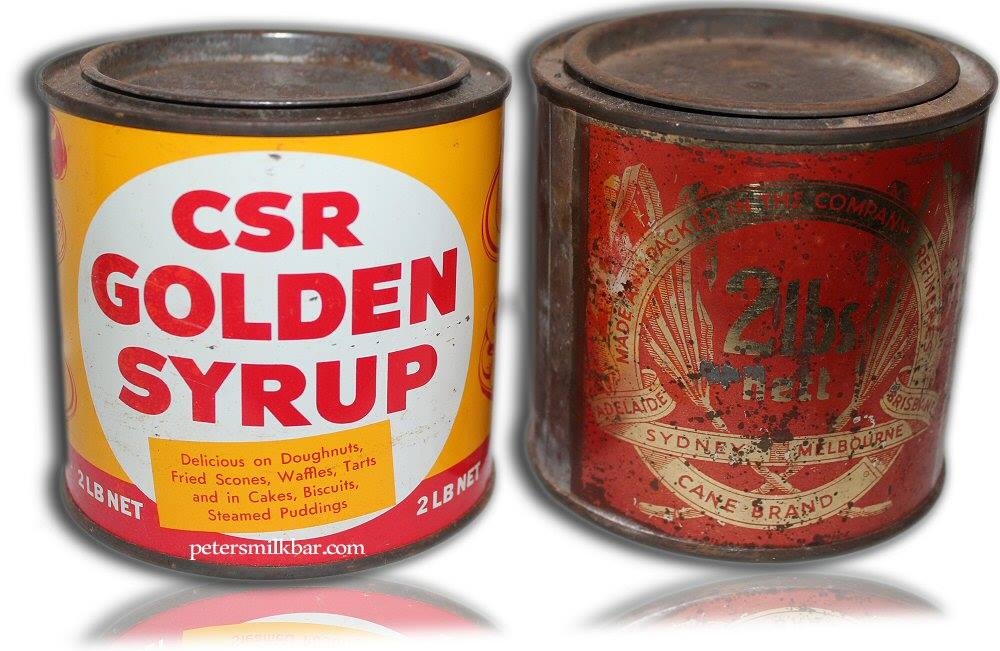
We know what Cocky’s Joy is, but how did it feature in a novelty race? Photo: Australian History.
Readers of a certain age today will indeed remember Cocky’s Joy with great fondness and know that it is a sweet golden syrup made from Aussie sugarcane that goes perfectly with Johnny cakes and fireside scones.
But as to how it was part of the shenanigans by the lake as men competed in their ‘unmentionables’ is perhaps lost to history.
We do know that on that cool September day by the lake, a record crowd competed in sack races, thread-the-needle, barrel races, bolster fights, egg and spoon, throwing the cricket ball, alarm races and the “Comic Costume Footrace”, which perhaps sheds some light on the underwear mystery.
Before listing the winners, the writer again pays tribute to farmer Annison.
“We can scarcely imagine what the sports would have been like without Mr Annison, who was not only the compendium of knowledge on all that was to take place but in several instances, a very able exponent of the sports which he exhorted others to participate in.”







